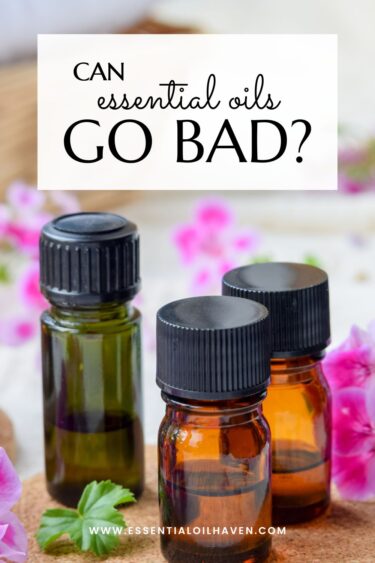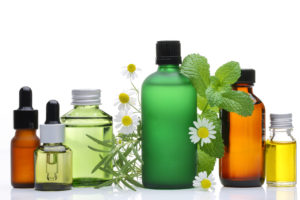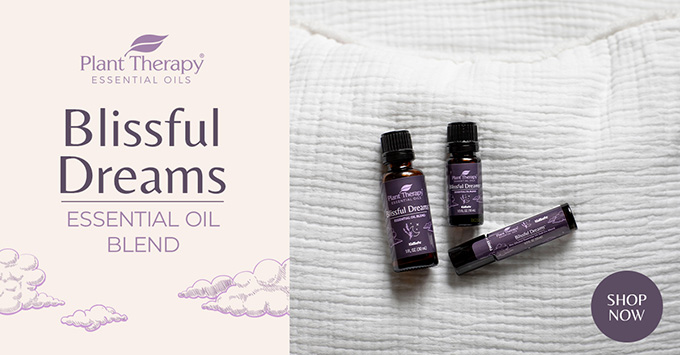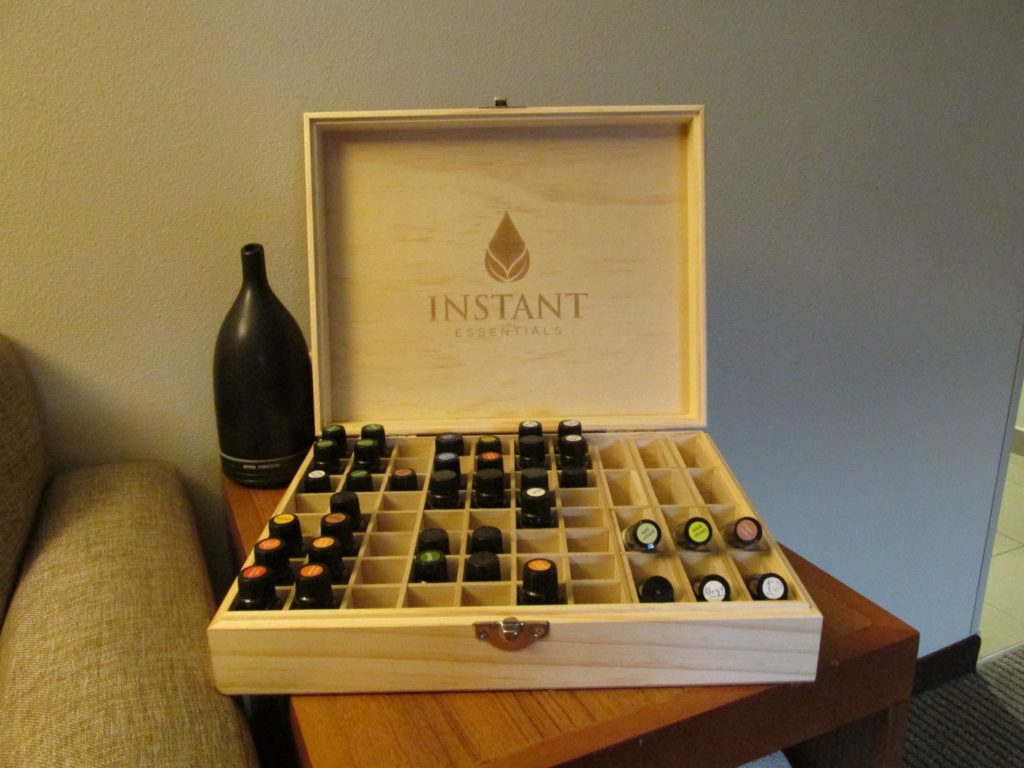
Are you wondering how long your essential oils will last you? Whether they’re still safe to use after a few years in your medicine cabinet? Maybe you’ve been told they don’t have an expiry date. This article is all about essential oils shelf life and how to best ensure you can enjoy your oils for the longest possible time.
Quality of Essential Oils
First and foremost, using pure essential oils is very important in aromatherapy. It is the oils’ purity that determines how effective the desired aromatherapy treatment will be.
At times, bargains or cheap oils can be of poor quality. In other words, they are not made out of pure plant extracts, which is necessary if the essential oil should have therapeutic effects. The best way to know if the oil is pure is by knowing its source and testing it through Gas Chromatography (GC) or Mass Spectrometry (MS). Testing an oil with GC/MS will give you its exact chemistry. However, it will not tell you the oil’s energetic quality or vibration.
Most manufacturers these days are really good about disclosing their oils’ GS/MS testing information as their desire, too, is to educate customers on oil quality, origins and use. You can ask the manufacturers themselves – or find more information in my very detailed essential oil brand reviews.
Ideally, pure essential oils do not expire. They have antibacterial and antiviral properties and do not contain water. Hence, they don’t grow mildew, mold, or yeast. That being said, once they interact with outside properties such as heat and light, they do start to change.
Factors that Affect Changes in Essential Oils
Three most common outside forces that start changing the properties of essential oils, are:
-
Oxygen
Oxygen changes the chemical composition of essential oils as it reacts with some their constituents. A change in the chemical composition of the essential oil means that it’s no longer the same as before. You will not know its contents until it’s retested.
A study found that about 66.4% of the monoterpene content in Lemon essential is gone after 12 months of daily exposure to air. When the exposure is reduced to once a month, the content degradation is also minimized.
You should note that exposure to air does not hasten the oil’s expiration. It changes its composition so that it will not function as good as when it’s pure (at the time the bottle is first opened).
-
Heat
There have been studies proving that extreme heat can actually change the chemical structure in the essential oil. While there doesn’t seem to be concrete proof of this yet, makers are careful about the temperature of the room in which the essential oils are stored.
-
Light
Light promotes the formation of any oxygen-free radicals. These are highly reactive and could change the essential oil. A study done with Sweet Orange essential oil shows that exposure to UV light for about 50 minutes leads to dramatic changes. Some of its chemicals were increased, and some were decreased. The most shocking thing is that there were 12 new chemicals present in the oil.
The best way to avoid making changes in the original composition of the oil is to exercise proper oil storage.
Guide on Storing Essential Oils
An essential oil can’t stay fresh without proper storage. It does not react well to changes in temperature, and since you’ve spent a considerable amount of money in it, you might as well look after it properly. Otherwise, you’ll lose its therapeutic benefits. Luckily, storage solutions for an essential oil are easy.
-
Bottling
Since ultra-violet light affects the composition of the essential oil, make sure that you put it on a dark-colored glass. Dark amber is the most common shade of glass. However, you can also choose one that is violet, green, or blue. They offer the same level of protection.
Putting your essential oil on a dark glass does not mean you can expose it directly to the sun. While the glass helps screen the UV light, natural heat will still speed up the oxidation process. So, be sure to still keep it some place dark and cool.
Cap the glass tightly so as not to expose it to oxygen. If not, some of the chemicals will evaporate, especially if the oil is not 100% pure.
-
Cooling
Essential oils are prone to oxidation under heat and temperature variations – especially citrus oils. The same is true for massage oils and carrier oils. To avoid this, you can store them in your refrigerator. Be careful not to set the temperature too cold, about 5 to 10 degrees Celsius is enough. In fact, it’s much better than storing your oils on the kitchen’s window ledge.
Citrus essential oils will not change under the prescribed temperature; however, Aniseed, Rose Otto, Fennel, and Star Anise may solidify. So, before you use any of them, allow them to sit for a few hours. This will return them to their normal form. For the Rose Otto, you can just hold it in your hands for a few minutes. Never put the oils under the sun in order to hasten the process. Let it the natural wax dissolve without exposing it to UV light.
In summer, when it’s especially hot, essential oils can be particularly vulnerable. Store them in the fridge and take them out about 12 hours before you use them. This way, they can adjust to the room temperature naturally. Give it a quick shake to ensure that the waxy particles are completely dissolved.
-
Boxing
If you don’t have any space in your fridge, use a storage box instead. It’s good enough to keep some types of oil. You just have to keep in a place that has the least or no changes in temperature. You also have to remember that some oils are moderately volatile, so they will evaporate quickly if you don’t cap it tightly. Also, don’t leave them lying around after you use them. Put them back in the box.
-
Storing
Essential oils are flammable. Thus, do not leave them near fires, candles, cookers, or any other sources of ignition. Don’t forget to keep them away from children. The essential oil is not something they can play with.
Never keep undiluted oils into plastic bottles. Why? Most oils will eat into the material and start degrading the plastics. Diluted oils like lotions and massage oils might be stored in plastic since the concentration of essential oils is lowered through the mixture with the other components.
Shelf Life of Essential Oils

Essential oil glass bottles with rosemary, mint and chamomile flower
As said, pure essential oils don’t go rancid, but they can oxidize and deteriorate over time. In other words, they slowly lose their aromatic quality and therapeutic value. In order to know just how long an essential oil’s chemical stability, you should check the oil’s individual shelf life.
Aromatic oils are mixtures of several compounds. If this mixture remains stable, do not change in chemistry, and keep their therapeutic value for a long time while in storage, then they have a long shelf life. The shelf life of each oil differs from each other and is mainly influenced by a lot of factors. These factors include the quality of the plant, when and how the plant is harvested, the method used during distillation, the condition during distillation, handling of the oil, storage, and storage conditions. Thus, the shelf life of an essential oil is hard to predict.
Though there is no perfect way to predict the shelf life an essential oil, the best practice is analyzing their chemical properties, which starts by knowing their chemical family.
The chemical families of an essential oil include the sesquiterpenes, sesquiterpenols, monoterpenes, monoterpenols, esters, ethers, aldehydes, ketones, phenols, and oxides.
-
Sesquiterpenes (8-10 years)
These are rich essential oils that are anti-bacterial, anti-fungal, analgesic, anti-spasmodic, anti-inflammatory, sedative, and cooling. These also tend to be energetically grounding, centering, and calming. So they have the base and middle notes. These include:
- Black Pepper
- Cedarwood
- Ylang Ylang
- Vetiver
- Spikenard
- Patchouli
- Opopanax
- Myrrh
- Ginger
- German Chamomile
-
Sesquiterpenols (10-15 years)
These oils have different therapeutic properties, but are usually anti-spasmodic, sedative, anti-inflammatory, anti-bacterial, skin healing, grounding, and immune stimulating. They have base notes and are heavier in terms of energy and emotional grounds. These include:
- Sandalwood
-
Monoterpenes (2-3 years)
These are airborne purifiers and deodorizers. They are also energetically and emotionally uplifting and can even give an analgesic effect to ease stiffness and muscle pain. They also minimize stagnation in energy as they support changes in the body. Since monoterpenes are unsaturated, they are usually unstable and more prone to oxidation. These include:
- Lemon
- Sweet Orange
- Siberian Fir
- Ravintsara
- Juniper Berry
- Grapefruit
- Frankincense
- Cypress
- Black Pepper
- Bergamot
-
Monoterpenols (5-6 years)
Monoterpenols are anti-infectious agents, so they are anti-spasmodic, anti-bacterial, antiviral and anti-fungal. Since they are non-toxic, they are mild on the skin and on the mucous membranes. These essential oils are usually used for skin care, nourishing the nervous system, supporting emotional balance, and strengthening the immune system. Monoterpenols include:
-
Esters (5-7 years)
These oils are antispasmodic and sedative. They are balancing, calming, uplifting, and soothing. So they are good for the digestive system and for the skin. Their aroma tends to be fruity or floral. Esters include:
- Wintergreen
- Roman Chamomile
- Helichrysum
- Jasmine Absolute
- Birch
-
Ethers (5-7 years)
These have the aroma of anise or licorice and tend to have antispasmodic, calming, and carminative. They can also reduce spasms and pain. However, they can be skin irritating. These include:
- Tarragon
- Nutmeg
- Fennel
- Anise
-
Aldehydes (4-5 years)
Aldehydes have anti-inflammatory, sedative, anti-infectious, and antispasmodic properties so they are often used for cooling the temperature and toning the nervous system. They are also effective antifungal agents. If oxidized, these oils are irritating to one’s skin. These include:
- Melissa
- Lemongrass
-
Ketones (5-7 years)
These oils are usually used in aiding respiratory infections like flu and colds. They are effective mucolytics and expectorants, so they can relieve pain and reduce mucus. They are also analgesic. Ketones include:
- Thuja
- Spike Lavender
- Sage
- Pennyroyal
- Mugwort
- Hyssop
- Clary Sage
-
Phenols (4-6 years)
Phenols are antiseptic, anti-bacterial, anti-infectious, rubefacient, and has disinfectant qualities. Usage over long periods of time will lead to toxicity, so you have to be careful in maintaining these oils. Phenols include:
- Clove bud
-
Oxides (3-5 years)
Oxides are mucolytic, expectorant, and antiviral. It can aid any respiratory illness and also have stimulating effects on one’s mental processes. These include:
- Rosemary
- Laurel Leaf
- Eucalyptus
In Summary
Essential oils can have a shelf life of anywhere between 2-15 years. In and of themselves, they don’t deteriorate.
However, once you start using them and exposing them to sunlight, oxygen and temperature changes, their chemistry will start to react to these elements and start becoming a “different oil” than when you first started using it.
Being aware of this and cautious not to over-expose your essential oils to these factors, you can guarantee the most longevity of your precious essential oils.
What do you think?
What is your experience with long-lasting essential oils? Let me know in the comments below!




Ella
I’m seeing confusing information about eucalyptus oil. Some companies state a one year shelf life whilst some sites, such as this one, advise up to three years shelf life.
robert george comitz
I have sandalwood oil that is still good after 32 years with less terpene smell. I have rose otto that actually smells better after 32 years. My vetiver is still good and my labdanum and my frankincense and my patchouli and some of my chemical compounds are still usable.
Christine Fox
I have had a small brown glass bottle of Wintergreen oil stored in my bathroom cabinet. It has been there a few years. Would it be ok to use now. I could not find anything about Wintergreen in your article on this sight in shelf life of essential oils.
Thank you,
Christine
Cerise
Thank you for this great article. When does the shelf life start? Does it start when the oil is opened and exposed to air? If I have an unopened oil in my refrigerator for 3 years, is it still as good as new? Thank you~
Moksha Essentials
Great article, thanks for sharing this information with us.
Maria
Hi! I just got back some oils that are 5-7 years old. Are they all negated now? There’s some German chamomile, neroli, valerian etc. They had been opened but stored in a cool place. Do they all need to be dumped? Also, is the shelf life of your above oils for unopened ones? Thank you!
John
What if the essential oils are NOT ever opened and stored in a home (where temps are stable) in a dark area away from light and heat? Will they all keep indefinitely in that situation?
Mata
Good advice. I’ll test my galbanum oil.
Lynn
Four months ago I bought citronella and lemon eucalyptus. The brand is Healing Solutions. I bought these to make big candles and give as gifts. They smelled so good and were a big hit. Only 3 months later and they smell awful. Rancid. I’ve kept them on the kitchen counter basically dark as my place gets no light and indoor temperature of 75/76. It’s disappointing to say the least
Madeeha
Hey. I just received a bottle of oil which has few essential oils in it, I placed it on the shelf where the temp was cold but there was light and used it for 8 months. So do u think the oils in it become has oxidized? Or it won’t harm me?
Kaye
What do you think of Healthy Traditions formley Tropical Traditions essential oils?
Anna
I just received an order from RMO oils online. I checked all the batch numbers on the bottles with their site the day I got my shipment. My lemon and grapefruit were tested 1 year ago which means the oils are at least that old. Some were from 2016 but they were not citrus oils and still technically are within therapeutic time frame. Is this normal from most companies, that the bottles you buy to be a year plus years old when you get them? I am worried I am buying oils that will not be therapeutic much longer or are already not therapeutic at all, which is a waste for me because that is why I buy them. Would you return the oils or do you think its ok?
Mary Jordan
HOW CAN YOU TELL IF THEY HAVE GONE BAD? i HAVE SEVRAL BOTTLES OF AURA CACIA AND BELIEVE THEY ARE AT LEAST 3 YEARS OLD? THANK YOU FOR YOUR TIME
Emma
Dear Mary: Under ideal conditions, some essential oils could stay good almost indefinitely. However, “ideal” conditions are hardly ever achieved. A good rule of thumb, for most oils, is 2 years. So personally, I’d probably think of disposing of your current oils. You could also check your oils against the list in this article above, where certain families of oils have been assigned certain shelf lives – some of which much longer than 2 years.
Renee L. Marks
Do not dump them because you can use expired essential oils in your cleaning products and even laundry for disinfectant properties.
Judy Ray
Hi,
Why do Young Living Essential Oils not have an expiration date?
Joan
They actually do. I am a distributor and would notice them in the starter kits on the oils (for my clients) but not so much on the ones ordered to my home
Vanessa
I just found a bunch of essential oils I bought from Thailand about 4/5 years ago! They are still unopened, do you think I can use them? One is grapefruit, one is lemongrass, one is an energizing blend and the other a relaxing blend. They all say 100% pure but they are from a Thai tourist shop and they do have an expiry date printed on the pack for 2014!
Emma
Hi Vanessa, I personally wouldn’t use them as they may have undergone quite a few temperature changes or other variations within the past 4-5 years… I’m guessing for probably around $40-$50, you can get a good replacement set from a nice brand like Plant Therapy (read about them here). Especially because your oils do have an expiry date printed, I definitely wouldn’t use them.